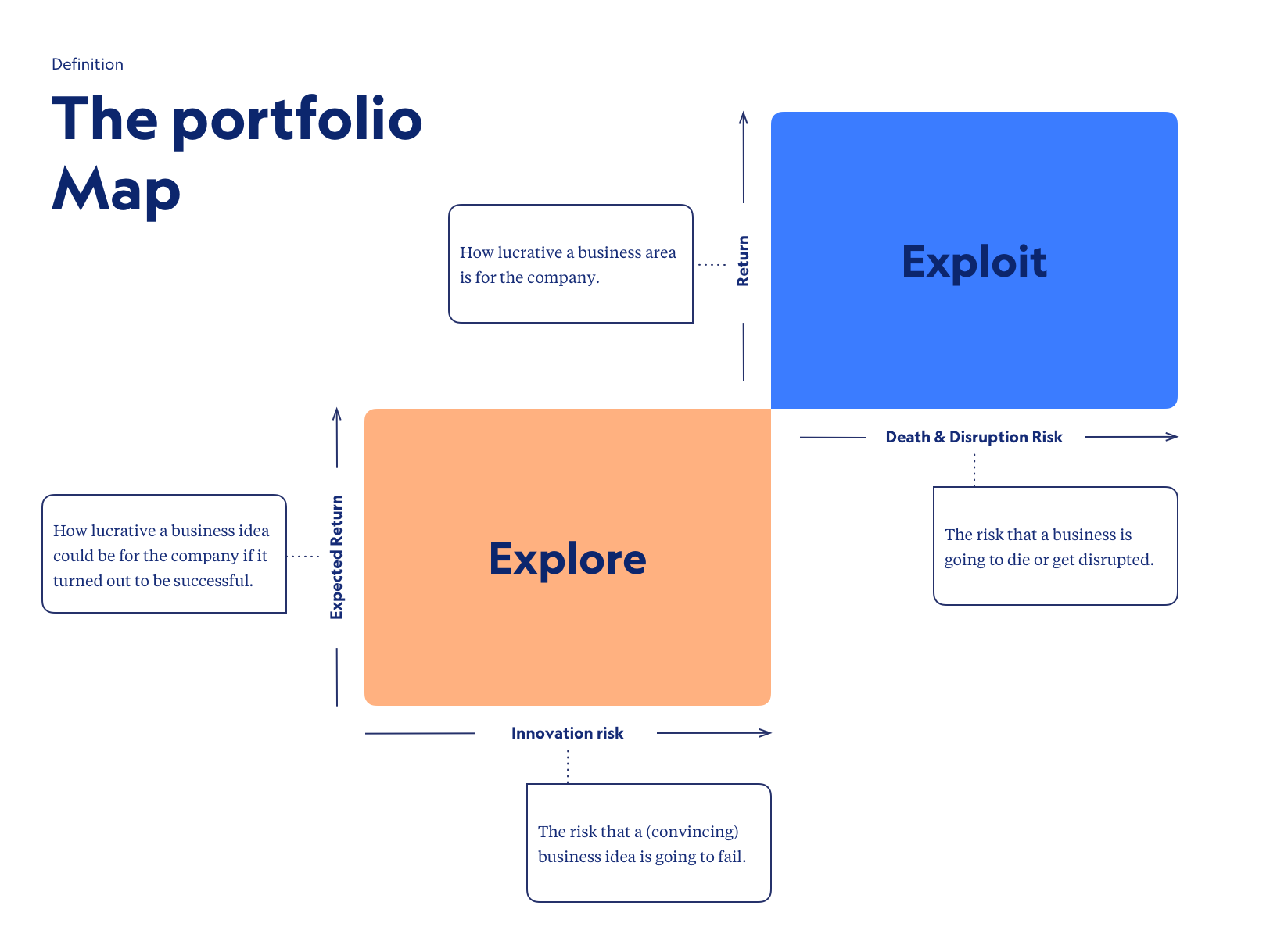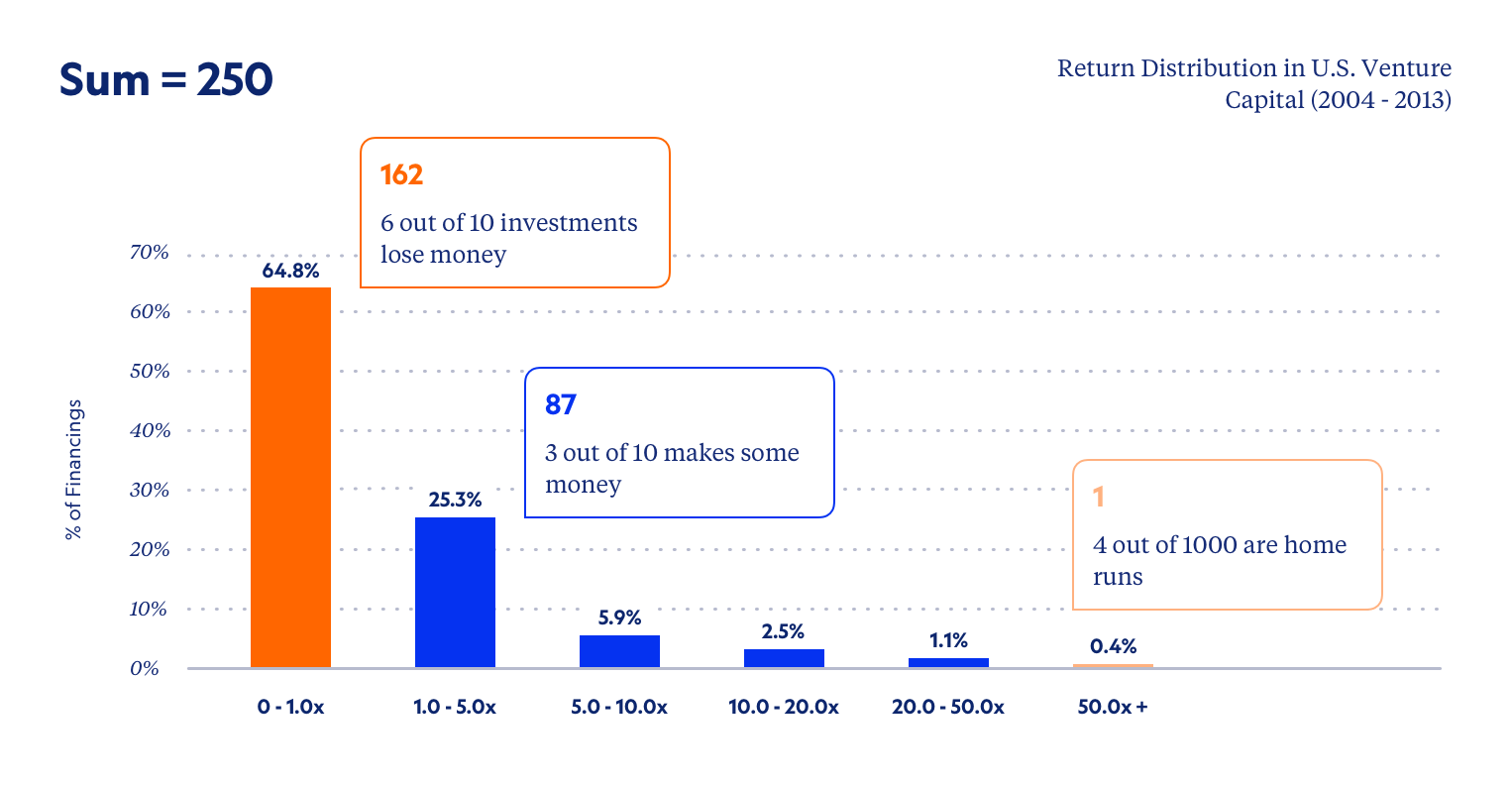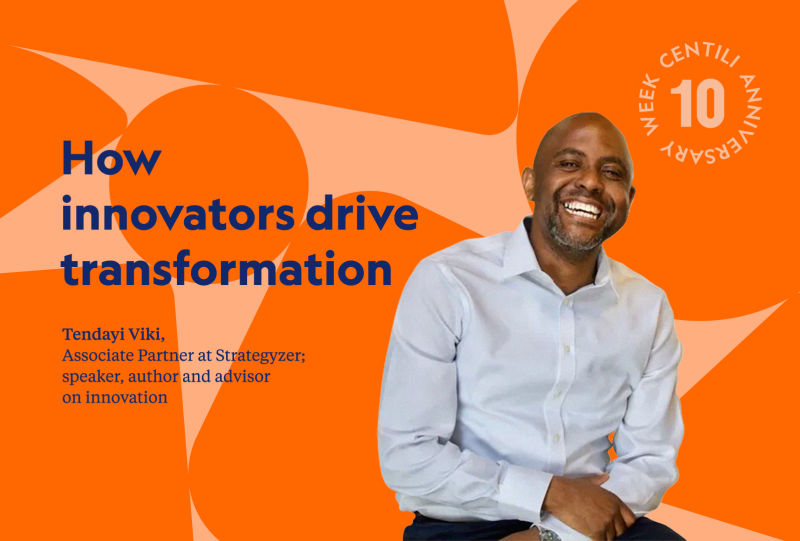author

Content Marketing Manager
published-on
12 Feb 2021
tags
Everyone is talking about innovation nowadays. Although it’s been a buzz word for some time, the post-Covid world calls for it more than ever. With many companies moving to the digital sphere for the lack of physical interaction between them and consumers, it has become evident that business model innovation is the only way to stay on top of the game. Companies not only ought to find innovative ways to approach the new dynamics of consumption, but the entire business portfolios need to follow up to stay relevant.
To better understand the process of business innovation, and to learn how to foster it more abundantly at Centili, we invited Tendayi Viki, a keynote speaker on innovation, and the author of the “Pirates in the Navy” to share his thoughts during the Centili 10th Anniversary Week, beginning of the year.
Innovation - a fad or necessity?
Like many fads, the innovation concept started as a genuine excitement only to be turned into a fashionable accessory to many companies. Attracted to the idea, companies invest in their innovation hubs filled with lazy bags, whiteboards covered with sticky notes, and a bar with 57 coffee flavours. As much as these things can help creative thoughts emerge, the issue is that it’s not what makes innovation. Innovating without creating value is just - posing. Furthermore, to create value, innovation needs to become a measurable, strategic process.
Like any other process, business innovation follows the rules spanning from conception, testing, to delivery.
Viki advocates that leaders should foster, but not force innovation. Before we delve into innovation philosophy, let’s first break down what business innovation is.
Types of business innovation
Business innovation is when a company or an organisation implements new ideas, processes, products, or services to drive revenue for the company by reinvigorating the business or adding value to customers.
The two main branches of business innovation are business model innovation and industry model innovation.
The first one occurs when a company rethinks the old and introduces new business models by which it offers its products or services. As an example, Centili is going through such a transformation now. From a DCB company, we are shifting to a PaaS company using our deep expertise in payments. We have reached the stage where we can offer a single-integration solution to our clients, taking care of the platform’s integration and management.
Interestingly, Centili’s value proposition is to help other companies innovate their business model by offering new payment methods to their customers, which categorises as the revenue model innovation. Well, that’s one way to look at it.
The second type of business innovation is the industry model innovation. Being more radical than the others, this model transcends the industry boundaries and completely reshapes the business model and product. An example of this is Formula One, which has changed its business, revenue, and industry model, becoming a highly sought tech company that helps produce hi-tech products such as aeroplanes, medical equipment, etc.
Tendayi Viki doesn’t base his observations on the type of business innovation. Instead, he puts up the universal framework that a company with an aspiration to become “invincible”, as he calls it, needs to consider and apply.
How to become an invincible company
An invincible company is the one that lasts long enough to become a brand itself. Regardless of its size and industry, an unbeatable company is the one that keeps listening to the market’s needs and growing.
Viki explains the three essential features of an invincible company.
1. Continuous reinventing.
2. Building and competing on superior (read: sustainable, profitable, and inventive) business models.
3. Transcending industry boundaries.
Balance the risk - explore while exploiting
Once you’ve firmly set out on the road of innovation, consider this. Rather than a developmental stage often associated with startups, innovation is a discipline, and you can manage it. Companies with rigid structures, processes and practices, often have difficulties with innovation, which is why it’s widely believed that SMBs are better at it. Viki believes that innovation is not an event, or diving deep into some creative chaos, hackathon type of thing, but a process that needs to take its space at a company.
The innovation space within an organisation is so much separate that it requires its own set of rules and procedures. Innovation does not comply with your standard business processes. Companies often stifle innovation by applying the practices they use for exploiting to explore new opportunities. Management styles need to be different.
 explore-exploit
explore-exploit
Before delving into innovation, company leadership needs to understand and arrange its relation with “business as usual”.
Naturally, every company leadership will worry about the feasibility of innovation. Is a company ever in a position to throw itself into new, uncharted projects? Who pays the bills in the meantime?
A way of addressing it is to keep the regular income source intact. Viki describes it as the ability to “walk and chew gum.” The companies capable of juggling exploration with the exploitation of their traditional revenue sources, are “ambidextrous” and better positioned for success. Needless to say, the internal processes need to be impeccable so that a company can build on it.
Developing an innovation portfolio
 The Portfolio Map
The Portfolio Map
“When you think about innovation, think about it in the form of a parallel portfolio,” says Viki. While you keep exploiting what you’re already great at -- growing, scaling, cashing in, as a company, you should be able to develop the innovation portfolio and keep nurturing your internal environment so that it can bear fruit eventually.
At Centili, we’re witnessing such a duality: on the one hand, we have our long-term DCB customers, and on the other, we’re starting to pick fruits of our exploration with PaaS business model and conversational commerce.
The innovation portfolio development should be the opposite of the famous Holy Grail search. Instead of fixating on an idea and looking for ways to make it happen, Viki suggests creating an abundance of ideas. He claims that, statistically, there’s a line of 250 $100k innovation projects behind one mega-success. Translated into smaller sums and number of attempts, out of 50 ideas, over half will fail, some will underperform the expectations, and only one will succeed.
Leaders don’t pick winners
“Leaders don’t pick winners. They create the conditions for the winners to emerge.” Leaders provide the framework by setting the stage and steering towards the kind of ideas they’re willing to invest in. They provide the strategic guidance, may help with backing up the processes needed for the ideas to flow freely. In the end, that’s all they do - the rest is up to the team’s creative powers. That’s the basic philosophy of managing the explore portfolio.
The common issue is trust. Companies accustomed to innovation processes often don’t grasp how to approach it or decide their drivers within the company. A term that describes innovators within corporate structures is “intrapreneur”. The more traditional approach to innovation is the R&D department. The issue is that this department is usually focused on solution finding, bypassing the connection to the desirability of the product.
The factors of innovation success
Companies that invest in Research & Development succeed with innovation. True? Not so fast. For the past 15 years, Strategyzer has researched the correlation. On average, the results have shown no guaranteed correlation between investing in R&D and returns. Some companies see the returns, and an equal number of them don’t. The question is: what are those companies that see the return of investments into R&D doing differently from the ones that don’t?
Based on an analysis of the successful companies that invest significant resources into R&D, there are three types of companies: the Technology Drivers (think Apple), the Market Readers (e.g. Samsung), and the Need Seekers. The Need Seekers outperform the other two, simply put, because of their alignment with the customer needs. These companies are usually called disruptive.
 3
3
If you are great at innovating and producing value proposition, that’s great. But don’t forget your job encompasses more than that. You need to keep sight of the steps, such as:
● How you deliver value to the customer
● How you create an excellent relationship with your customers
● How you make sure that customers are returning the value
● Mapping the key activities that you need to be good at to create the value proposition
● Mapping the partnerships and their cost
● Assessing the distance between the partnership cost and the revenue you’ll get
Reducing Risks: Design it like you’re right, test it like you’re wrong
Risk reduction is on every CFO’s mind. And for a good reason: products that have been developed based on the tech capabilities, and not on market needs’ needs, often fail. It’s essential to reduce the risks by searching and testing. The more steps you take to minimise risk, the more you can increase your investment.
Once the selected teams have taken steps to reduce risks, you can enter the phase that Viki calls “Design it like you’re right, test it like you’re wrong”. As much as you need idealism to produce the best possible MVP, you need scrutiny when testing it against reality. Ask yourself this: what are the things that need to be true for your idea to work?
Take a look at the short excerpt from Tendayi Viki’s webinar at Centili Anniversary Week.
So, let’s put an end to the notion that innovation is about the company’s attitude. Business innovation is a separate line of business that requires defined processes and their management. But it’s important to set it in motion and create the conditions for the innovation to emerge if you want to succeed.
If you are looking at ways to innovate revenue model, we have some ideas. Conversational commerce can give you the edge with your product’s customer journey by providing payment options within messaging platforms.
If you wish to receive more stories to your inbox, don’t forget to register for our monthly newsletter below!





